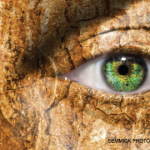“The key finding is that perception of pain does not depend only on the tissue-damaging stimuli, it also depends on other nearby stimulations, and on the spatial pattern that all the stimuli form. Thermal Grill Illusion (TGI) feels painful because of a three-way interaction between the nerves’ pathways that tell the brain about warmth, cold, and pain,” she added.
The European Union Seventh Framework Program funded the research. The authors reported no conflicts of interest.

